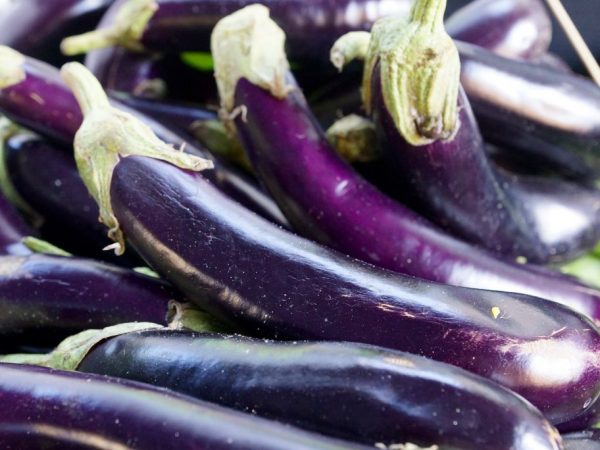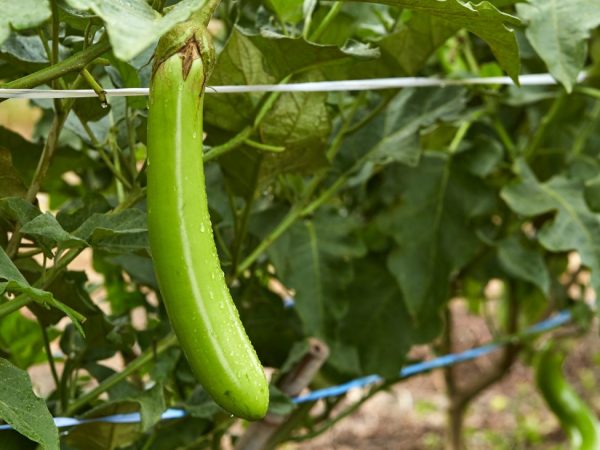Growing a Long Purple Eggplant
Almost every gardener is engaged in the cultivation of eggplants. The culture is demanding on the planting and cultivation procedure. The Long Purple Eggplant is the most popular variety in existence and produces good yields.

Growing a Long Purple Eggplant
General characteristics
Eggplant Long purple belongs to the early varieties. Vegetation lasts only 90 days from the moment the first shoots appear.
According to the description, the bush is not tall, about 70 cm. The stem is powerful, dense. Leaves are rich green, with a matte rough surface. The yield is high. About 2 kg of products are collected from the bush.
The fruits of the eggplant Long purple are about 25 cm long, 5-7 cm in diameter, and weigh 300 g.
Usage and taste
The pulp has a light, slightly greenish tint. Its structure is dense, not watery, so before cooking it is not necessary to soak it in salt to remove excess moisture. The taste is pleasant.
It is used in the preparation of fresh meals. Products of this variety are used for canned food and pickled culinary dishes.
Growing principle
Planting should be done at the end of March using special plastic containers. The seeds must be pre-treated with a manganese solution (4 g per 10 L of water) to kill all bacteria. After that, they are soaked in water and left for 20-30 minutes. Floating seeds should be thrown away as they are not suitable for planting. The rest is placed in a gauze bag and dried within 24 hours. After that, proceed to the main landing procedure.
2/3 of the nutrient mixture (humus, sand and earth, in a ratio of 1: 1: 2) is poured into the container. After that, it is necessary to make small pits in the substrate, up to 1.2 cm deep. The processed seed is planted in them and sprinkled with earth. Watering is carried out every other day. After that, the container should be placed in a warm, slightly freshened place. The daytime temperature is 16 ° С, and the nighttime temperature is about 25 ° С. After the first shoots appear, the container should be placed on the windowsill. When exposed to sunlight, seedlings begin to develop faster.
After 20 days, they are planted in open ground. Choose dry, fertile soils that are low in acidity. The plant has a negative attitude towards drafts and abundant sun, so it is worth planting in shaded and protected areas. To do this, adhere to the scheme 40x40 cm.The roots of the seedlings are deepened by 1.5 cm.
Care advice

Taking care of the plant is easy
During the cultivation process, Long Purple Eggplant needs minimal maintenance. Water every 10 days. Use a drip irrigation system to water the entire area evenly.
Top dressing should be applied 3 times for the entire process of forming a bush and fruit. The first feeding - 5 days before transplanting seedlings into open ground, with a calculation of 2 kg / m². The second time saltpeter is applied at the root, at the time of flower formation (1.5 kg / m²). The third top dressing - at the time of fruiting, at the rate of 3 kg / m².
Eggplant Long purple does not need support or a garter.The formation of the bush should be carried out regularly. To do this, remove all lateral shoots and form a long, uniform main stem.
Diseases and pests
According to the description, this variety is affected by diseases such as late blight and anthracnose. Fruits are often affected by fruit rot.
- In the fight against late blight, a solution of Bordeaux liquid will help (2 g per 10 liters of water).
- A solution of the drug Zircon (30 g per 10 l of water) will help to cure the bush from anthracnose. Spraying with a Regent solution (20 g per 10 l of water) will become an effective remedy against fruit rot.
Pests are aphids and beetles. Regular spraying with Fofatox solution (50 g per 10 liters of water) will allow you to get rid of beetles. In the fight against aphids, a copper-containing preparation Oxyhom (25 g per 10 liters of water) will help.
Conclusion
It is necessary not only to properly care for the plant, but also to take into account the peculiarities and timing of harvesting. If you do not have time to collect the fruits in time, then they will begin to overripe, using such products will become life-threatening, therefore

